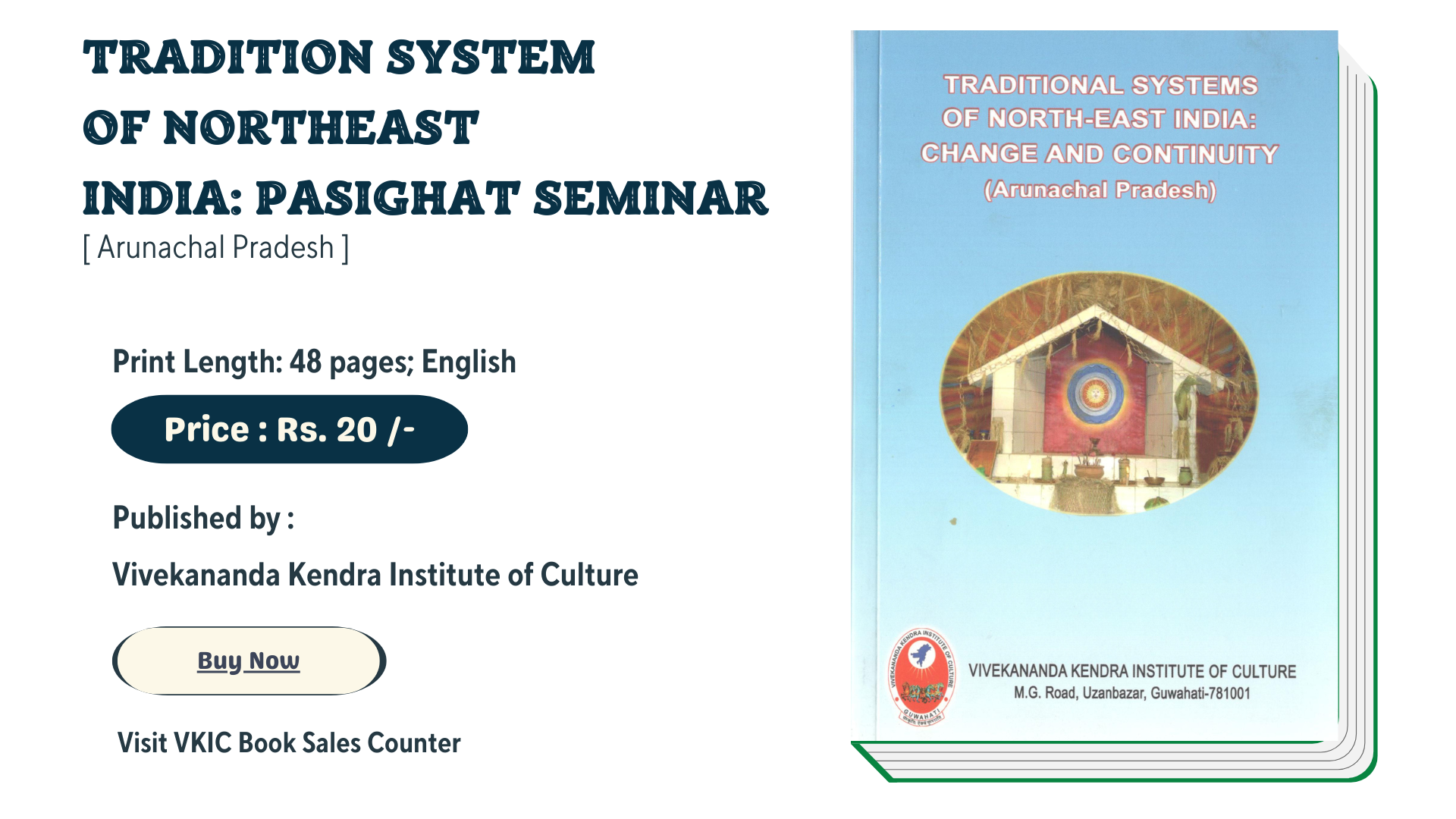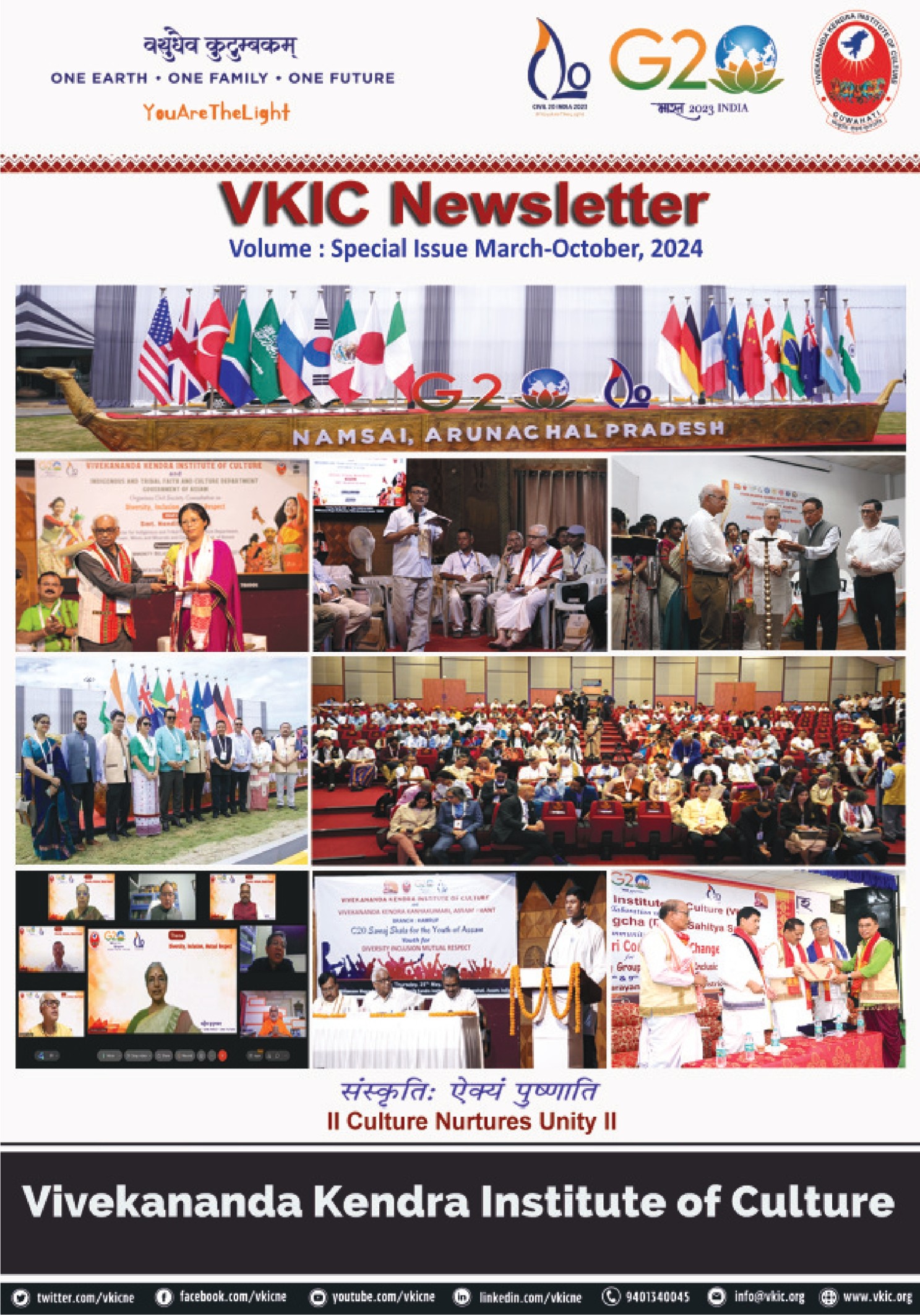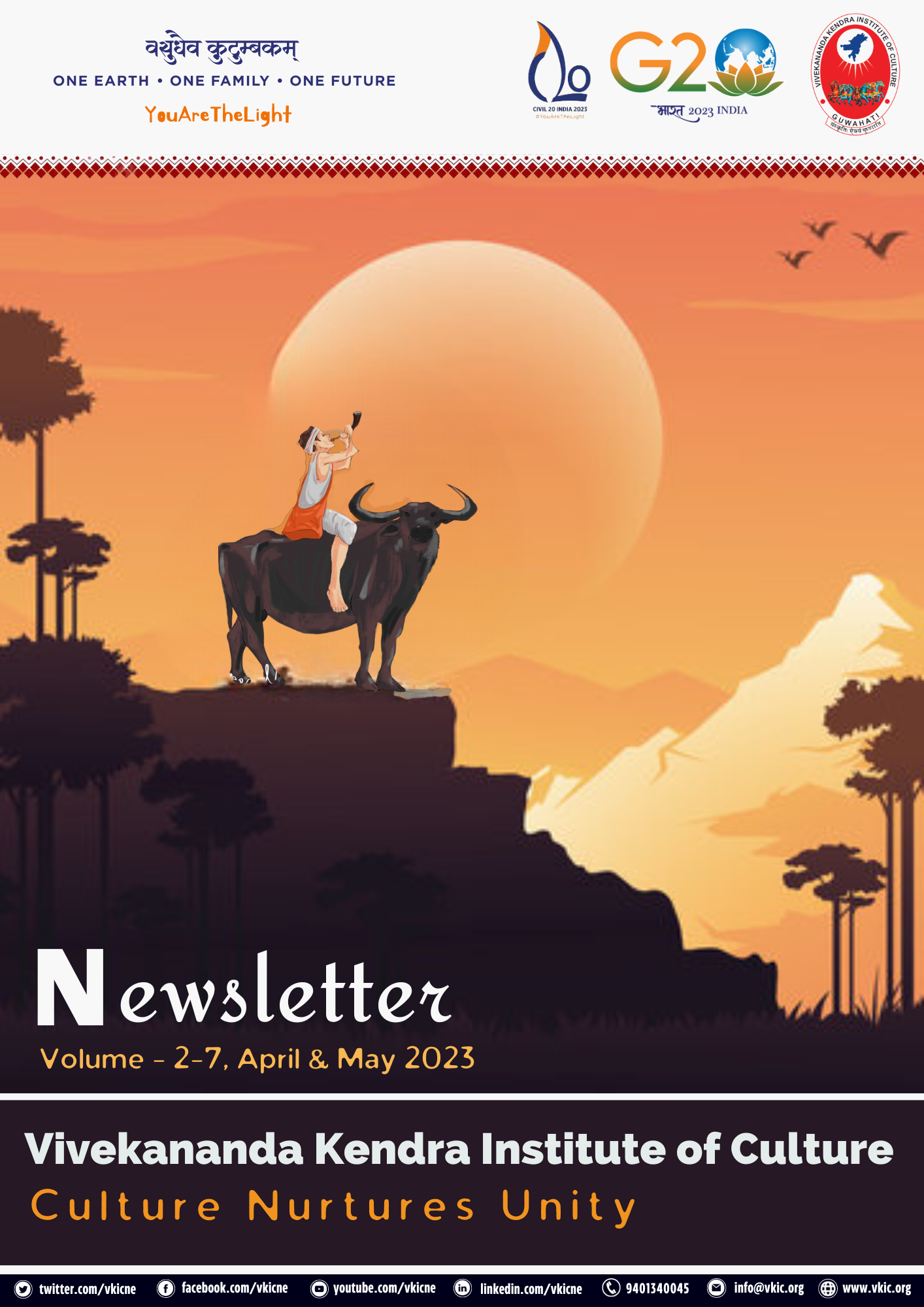
Book Summary by : Kum. Namrata Sarmah, Research Associate, VKIC
Traditional Systems of North–East India: Change and Continuity (Arunachal Pradesh) is a compilation of seminar research papers of first-hand information of the Galo community. They revealed many new facts hitherto unknown to the people in general. The book comprises of papers describing the socio-economic, cultural, religious and political aspect of the Galo community of Arunachal Pradesh.
Family and Kinship:
The writers explained the family and kinship system among the Galo community, that is, the Adi Galo society is basically a male dominated society residing in various districts of Arunachal Pradesh. They believed that the Galo community is based on the clan organization each clan and its sub-clans usually trace their lineage from one common ancestor. The writer described the prevalent of clan exogamy and endogamy in the marriage system and the concept of widow remarriage has no barrier among the community. The society is a patriarchal society but women are much respected and enjoy various rights in the family structure. Though the community prefers monogamy, but polygamy marriages are also permitted. To maintain strong bond among the clan, exchange of gifts among all the kith and kins are preferred.
Marriage amongst the Galo Community:
The marriage among the Galo community can be traced back to Lenyi and Kiro (the bird Nini and wild cat). The writer explained about the folklore of the first marriage among the community and from this union, the community flourished. The bride-price is a common practice where mithun is regarded as sacred and pure.
Oral Literature:
The oral literature of the community is passed from generation to generation through centuries which comprises of chronology, folklore, ballads, migration, etc. The writer described about the division of Adi literature into two sections, ritual section and social section and vividly described about the songs, tunes and usage of instruments in various festivals like Togu Panam, Hurin Ampir, Digo Barji, Mopin, etc.
Worldview of the Galo Community:
The writers explained the worldview of the Galo community. Though there are various mythologies about the Galo community, the popular view of the origin of the Galo community reveals that the origin of the universe is the Jimi, who is believed to be the creator of the universe.
According to the Galo community, before the works of Jimi, there was nothing in the world. Everywhere, there was darkness. Jimi started his work, and earth and sky came into existence. Earth and sky lay close together and out of their relation, things started to evolve, like a mountain, water, forest land, and slowly the evolution of living beings started. In due process, the Father of Man, Tani was born to earth and it is believed that from him, the life started among the Galo community. Another aspect, the writers have explained is about the pujas and taboos relating to various festivals and ceremonies like birth, marriage and death. The rituals and beliefs of the Galo community before, during and after child birth is explained by the writers sharing the on-going practices among the community which is passed through generations.
Faith of the Galo community:
Another important aspect put forth by the writer is the understanding of Gods and Goddesses and the traditional rituals among the community. The community believes in supernatural power where the supernatural power of some men or women remains in a dormant stage which comes to light through the inspiration of the “Guru” or teacher. It is known as Talo-Tanya who was the first mythical Nyibo among human beings, i.e, Tani. The community follows Donypoloism, which is, the Sun and the Moon.
Political Institutions:
The political institution of the Galos can be traced when human beings appeared on earth, that is, with Tani as the father of the earth and with that conflicts, jealousy, hatred, enmity, and friendship started among the sons of Abotani. To settle the disputes, there is a certain legacy to form a politico judicial institution to decide any sort of dispute, at the village level. With course of time, ‘Gaonburah’ became a pollical figure and all the disputes were settled by him. At the present social milieu where constitution plays a significant role, the role and representation of women have increased among the Galo community.
The writers of interdisciplinary areas brought out the uniqueness of the Galo community. The book aims to understand the rich cultural heritage, their origin and also the internal and external threats and insecurity of the community. Though the origin of the Galo community varies from one place to another, but their lies strong we-feeling and community bond among the people. With the advent of globalization and science and technology some beliefs and practices are avoided and revisited as change is inevitable in the present social environment.


